-
The legacy of Chernobyl -- 30 years on
The 26 April 2016 marks the 30th anniversary of the Chernobyl nuclear accident. For many, especially those born since 1986, it is a word they know without appreciating the full significance of what happened on that day. For others, it was a life changing catastrophe which resulted in largest release of radioactivity in the history of nuclear energy.
-
-
Dealing with irradiated nuclear graphite
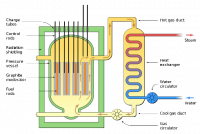
Since the beginning of the nuclear power industry, a large number of channel uranium-graphite nuclear power reactors was built across the world. To date, they all are on the output stage of the operation or decommissioning preparation. Approximately 250,000 tons of irradiated graphite are accumulated in the world, including ~ 60,000 tons in Russia. Due to the specificity of irradiated graphite, the treatment of this type of radioactive waste has not been determined yet.
-
-
Forget Fukushima: Chernobyl still holds record as worst nuclear accident for public health
The 1986 Chernobyl and 2011 Fukushima nuclear power plant accidents both share the notorious distinction of attaining the highest accident rating on the International Atomic Energy Agency (IAEA) scale of nuclear accidents. No other reactor incident has ever received this Level 7 “major accident” designation in the history of nuclear power. But the IAEA scale isn’t designed to measure public health impact. Chernobyl is by far the worst nuclear power plant accident of all time. It was a totally human-made event which was made worse by incompetent workers who did all the wrong things when attempting to avert a meltdown. Fukushima in contrast, was an unfortunate natural disaster – caused by a tsunami that flooded reactor basements — and the workers acted responsibly to mitigate the damage despite loss of electrical power. In terms of health ramifications, these two nuclear accidents were not even in the same league. While Fukushima involved radioactivity exposures to hundreds of thousands of people, Chernobyl exposed hundreds of millions. And millions of those received substantially more exposure than the people of Fukushima.
-
-
Belgium turns down Germany’s request to shutter two aging Belgian nuclear plants
Belgium on Wednesday turned down a request by Germany to shut down two ageing nuclear power near the German-Belgium border. Belgium said the two plants, while old, still meet the strictest safety standards. Both the Doel and Tihange power stations, in operation since 1974, were scheduled to be shut down and decommissioned in 2015.
-
-
Paris attacks' mastermind had files on German nuclear waste facility
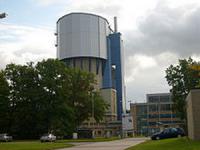
Salah Abdeslam, the mastermind of the November 2015 terrorist attacks who is now in custody in Belgium, had in his possession documents about a nuclear research center in Germany. The Juelich nuclear center near the Belgium-Germany border is used for the storage of nuclear waste.
-
-
How to protect nuclear plants from terrorists
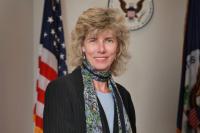
In the wake of terrorist attacks in Brussels, Paris, Istanbul, Ankara, and elsewhere, nations are rethinking many aspects of domestic security. Nuclear plants, as experts have long known, are potential targets for terrorists, either for sabotage or efforts to steal nuclear materials. At last month’s Nuclear Security Summit in Washington, D.C., representatives from fifty-two countries pledged to continue improving their nuclear security and adopted action plans to work together and through international agencies. But significant countries like Russia and Pakistan are not participating. And many in Europe are just beginning to consider physical security measures. To prevent an attack at a nuclear site, governments must take security at nuclear sites seriously now, not a year from now. In light of the current terrorist threat and with four Nuclear Security Summits completed, countries with nuclear plants need to up their game with regards to physical security at nuclear power facilities before it’s too late.
-
-
Digital mapping project tracks the last moments of the victims of Japan’s 2011 tsunami
Digital archives track the evacuation patterns of 2011 Great East Japan Earthquake victims between the time the earthquake and tsunami struck. The Tokyo Metropolitan University researchers who created the digital archives say they will make use of the archive to analyze evacuation behaviors — encouraging people, for instance, to avoid overestimating evacuation sites and head to higher ground.
-
-
New way to clean contaminated groundwater

A team of researchers has helped discover a new chemical method to immobilize uranium in contaminated groundwater, which could lead to more precise and successful water remediation efforts at former nuclear sites. Uranium is present in contaminated groundwater at various sites in the United States as a legacy of Cold War-era processing and waste disposal activities associated with nuclear materials production.
-
-
What is a dirty bomb and how dangerous is it?
The worrying news that individuals affiliated with the so-called Islamic State have undertaken hostile surveillance at a Belgian nuclear research facility has created growing speculation about the group’s nuclear ambitions. There are no indications that a terrorist group has obtained any fissile material to date. An easier option for a terrorist group would be to build a dirty bomb or, technically, a radiological dispersal device. This is the reason for sensible concern, rather than hysterical speculation about Islamic State’s recent activities in Belgium and, especially, Iraq and Syria. After all, without an effective government, it is unclear who controls the many radioactive sources in the region.
-
-
ISIS planning to use drones for radioactive attacks on Western cities
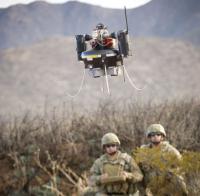
Prime Minister David Cameron warned that ISIS terrorists are planning to use drones to spray nuclear material over Western cities in a lethal “dirty bomb” attack. Security experts are worried about jihadists buying simple drones, which are widely available, and use them to carry radioactive material into the centers of large cities in attacks which would kill thousands and contaminate large sections of cities, making entire areas uninhabitable for years.
-
-
Is Belgium’s nuclear security up to scratch?
Belgium’s counter-terrorism efforts are once again being called into question following the recent tragedies in Brussels. The attacks were carried out against soft targets – the public check-in area of Brussels Airport and Maelbeek metro station – but a series of unusual and suspicious occurrences were also reported at nuclear facilities in the country. These events highlight the very real threat to nuclear facilities. For Belgium, this recent episode is one item on a long list of security concerns. Based on this history, the Belgian authorities should be primed to take nuclear security especially seriously. But there are serious questions about whether they are.
-
-
U.K. to ship highly enriched uranium for disposal in U.S.

The United Kingdom will ship large quantities of enriched uranium for disposal in the United States, and in return will receive nuclear material from the United States for use in the treatment of cancer patients in Europe. About 700kg of radioactive waste, most of which is held at Dounreay in northern Scotland, will be shipped to the United States to be treated in American nuclear disposal plants, which have a greater capacity than British plants to dispose of radioactive materials.
-
-
Brussels attackers originally planned to attack a nuclear facility: Belgian authorities
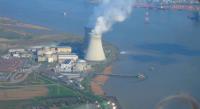
The terrorists who attacked the airport and a metro station on Tuesday had originally considered targeting a Belgian nuclear site, but that such an attack would have required more time and planning. The terrorists abandoned the nuclear facility attack plan after Belgian security services arrested a number of Islamist militants, forcing the terrorists to act more quickly and focus on soft targets instead of a hardened nuclear facility. EU counterterrorism coordinator said that Belgium’s network of nuclear power stations could become the targets of cyberattacks by terrorists in the near future. “And if [ISIS] ever did turn to nuclear weapons,” one experts says, “they have more people, more money and more territory under their control and more ability to recruit experts globally than Al Qaeda at its best ever had.”
-
-
Sandia Lab helps China launch nuclear security center
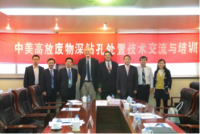
U.S. national labs and their Chinese counterparts have launched the Chinese Center of Excellence (COE) for nuclear security. The center will provide training for security personnel in China’s expanding nuclear power sector. Sandia notes that its experience in physical security grew out of decades of work securing high-consequence facilities against theft and sabotage.
-
-
Worries in Belgium over ISIS dirty-bomb plot

Belgian security authorities say that it appears that ISIS-linked terrorists in the country have been planning to build a dirty nuclear bomb for use in a future terrorist attack. Growing concerns over security at nuclear plants have led to the revocation of security passes of eleven workers. A senior Belgian nuclear official was also secretly monitored by individuals linked to the 13 November Paris attacks.
-
More headlines
The long view
Keeping the Lights on with Nuclear Waste: Radiochemistry Transforms Nuclear Waste into Strategic Materials
How UNLV radiochemistry is pioneering the future of energy in the Southwest by salvaging strategic materials from nuclear dumps –and making it safe.
Model Predicts Long-Term Effects of Nuclear Waste on Underground Disposal Systems
The simulations matched results from an underground lab experiment in Switzerland, suggesting modeling could be used to validate the safety of nuclear disposal sites.
